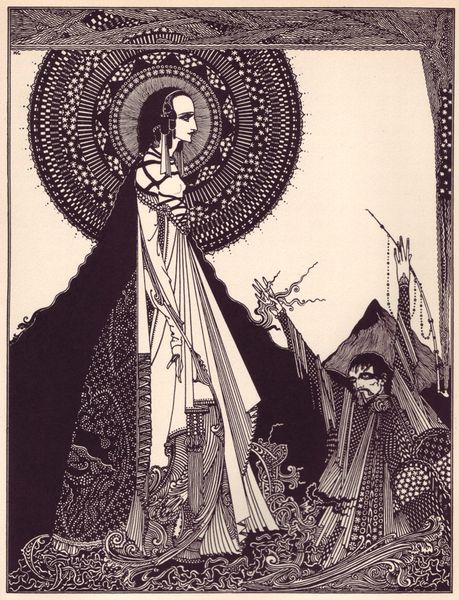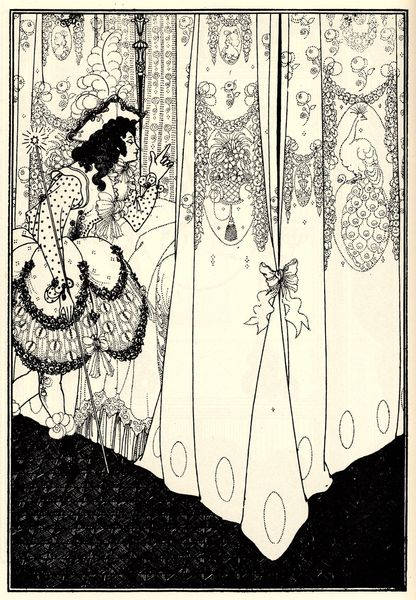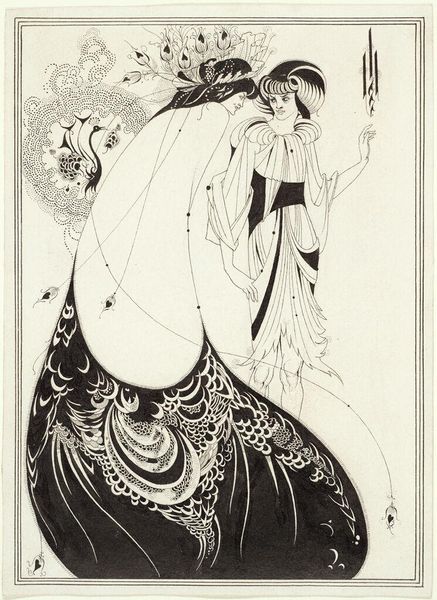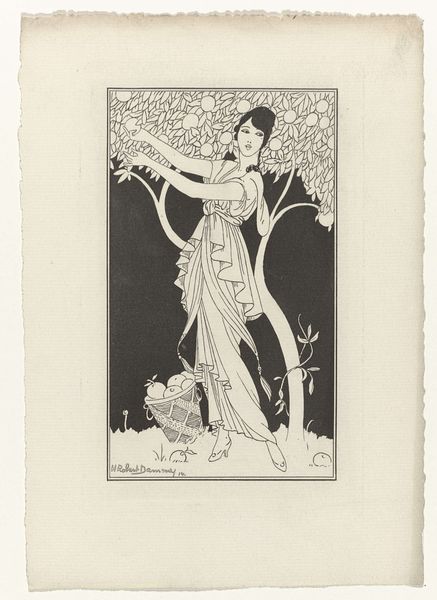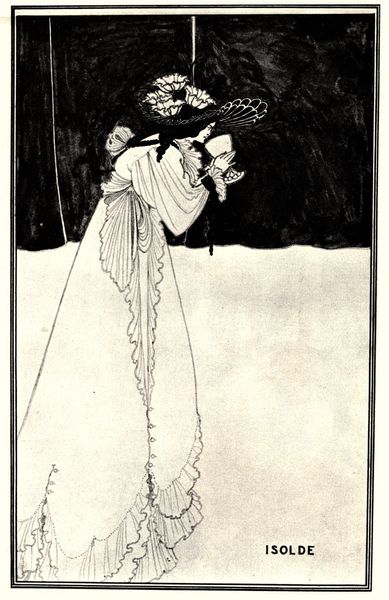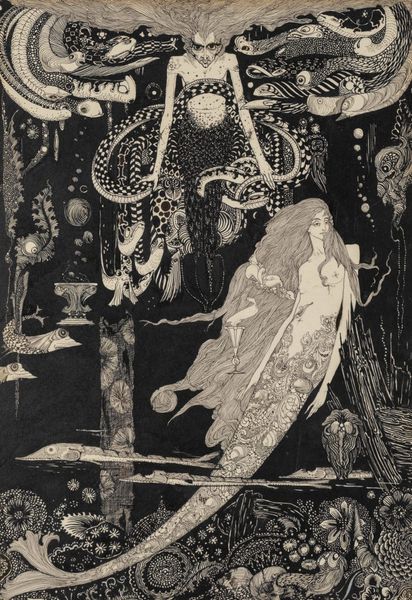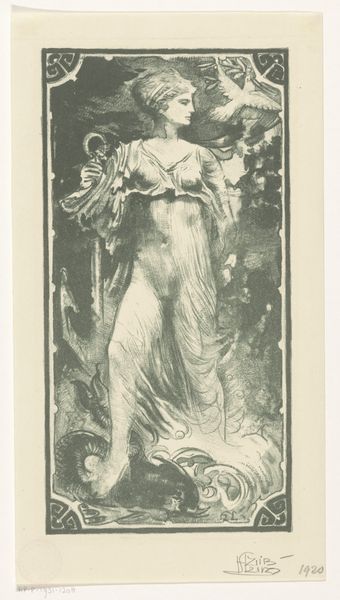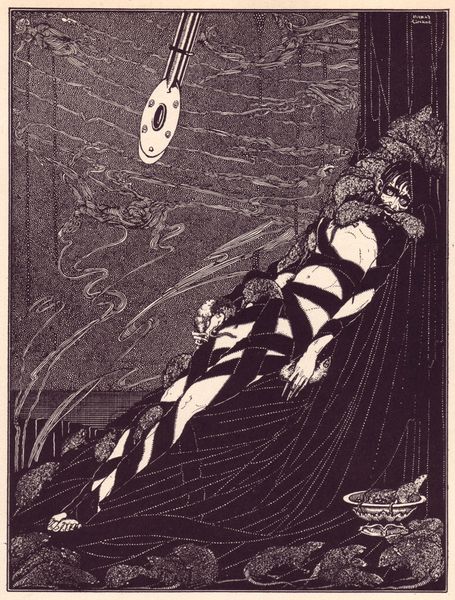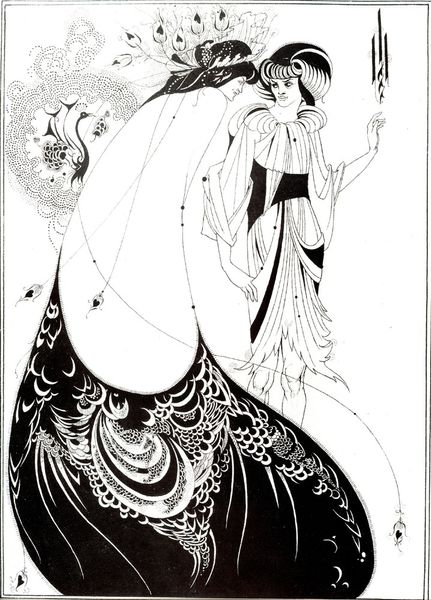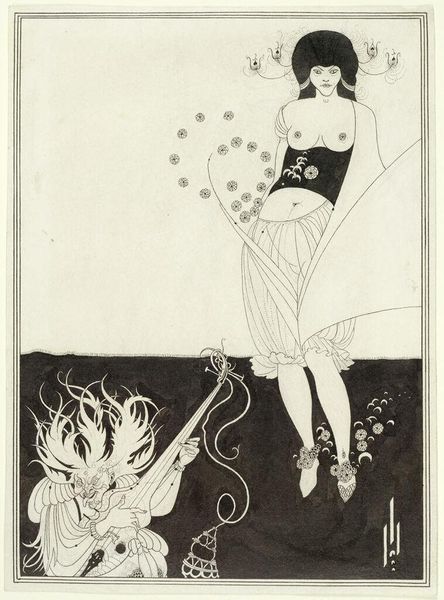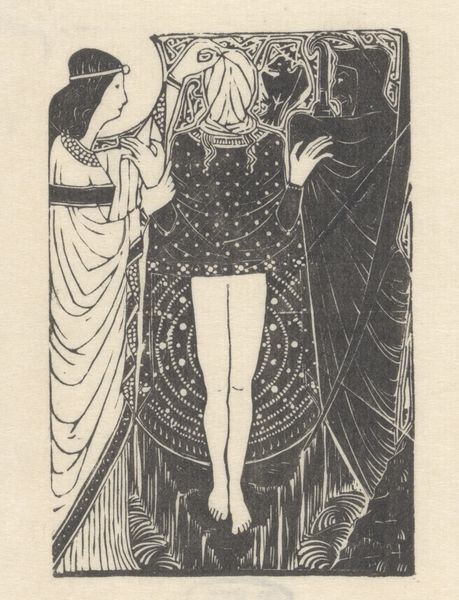
drawing, ink
#
portrait
#
drawing
#
pen illustration
#
old engraving style
#
mannerism
#
figuration
#
ink line art
#
ink
#
line
#
symbolism
#
academic-art
#
erotic-art
Copyright: Public domain
John Austen's Hamlet presents a stark vision in ink, where symbols of life and death intertwine to explore the depths of human tragedy. At its heart, the skull adorned with flowers looms large, a potent memento mori. This motif, evoking vanitas paintings of the Renaissance, reminds us of life's fleeting nature. Note the Ophelia-like figure, her expression serene, caught in the moment of death; the surrounding faces express a profound melancholy that speaks to the collective consciousness of grief. The skull, a fixture in art and literature, reappears across epochs, each time laden with the weight of human experience. Consider the skull beneath Ophelia. In ancient Roman triumphs, a slave stood behind the conquering hero, whispering, "Memento mori," reminding him of his mortality amid glory. Here, Austen harnesses that primal fear of death to confront us with the darker aspects of our existence. This image is not just an illustration, it’s an invitation to ponder our mortality and how death is received by the living. Austen’s Hamlet is a chilling mirror reflecting our deepest anxieties and the universal drama of existence.
Comments
No comments
Be the first to comment and join the conversation on the ultimate creative platform.
